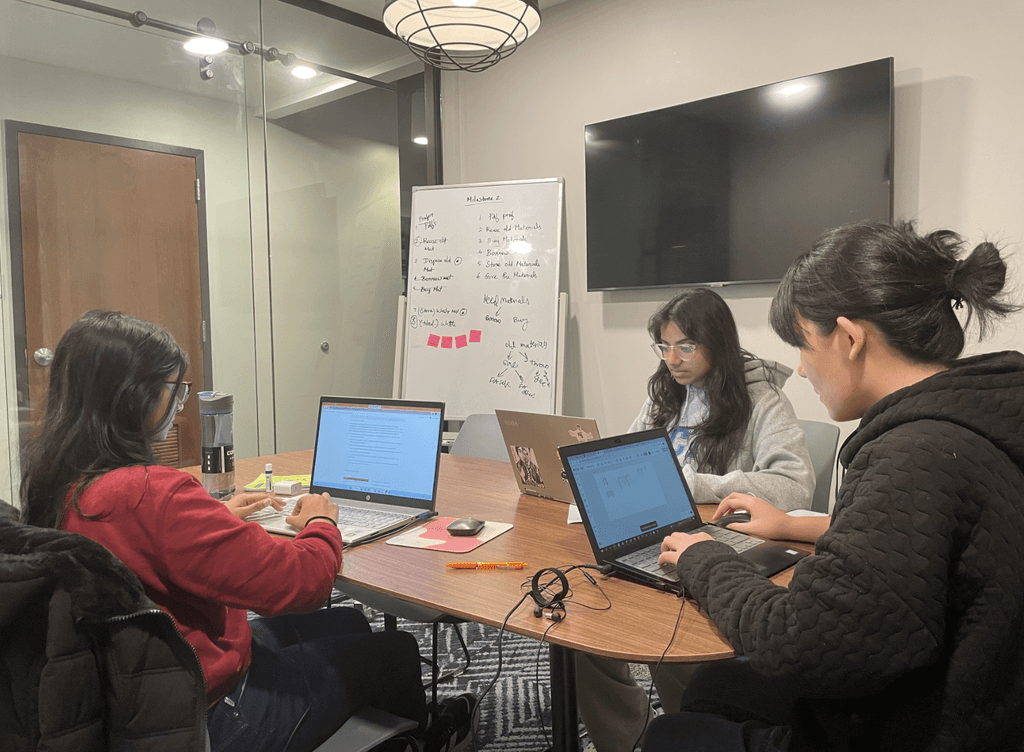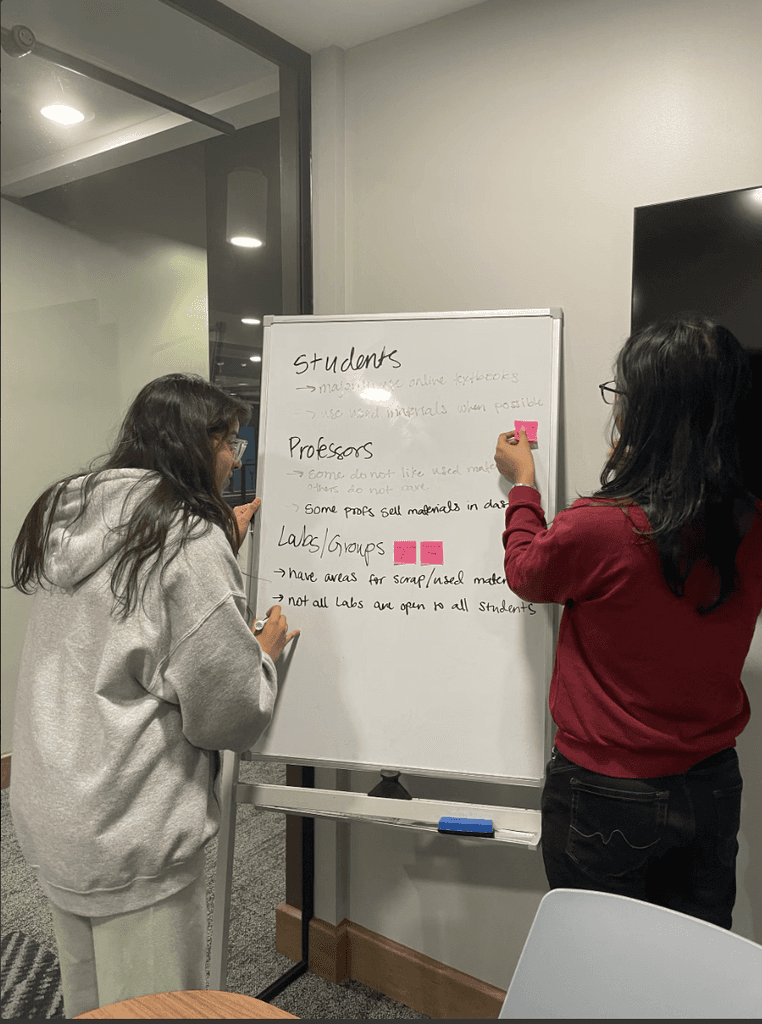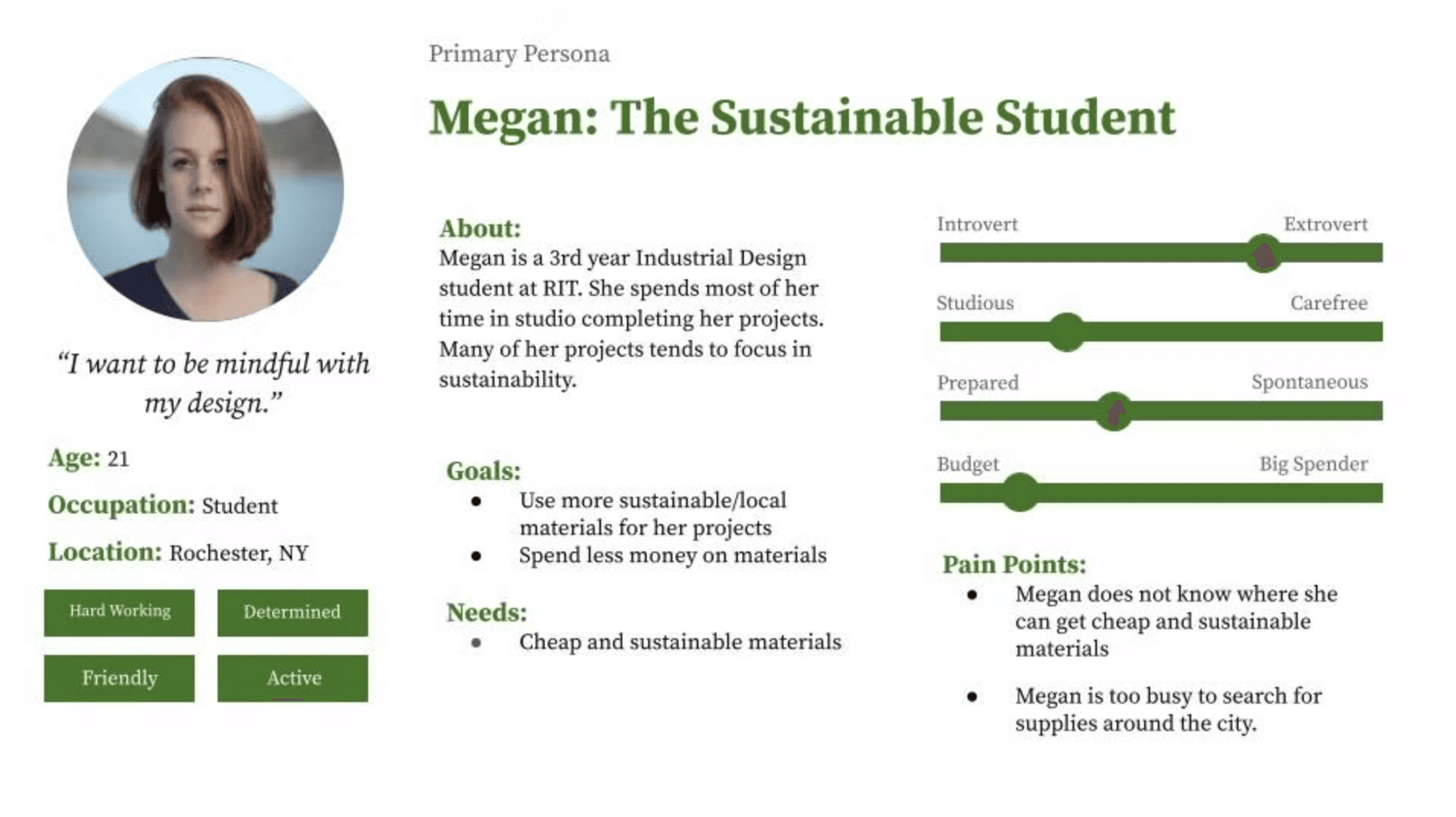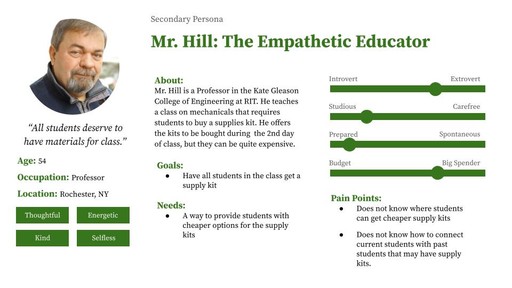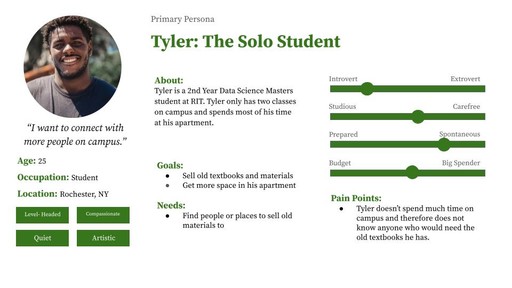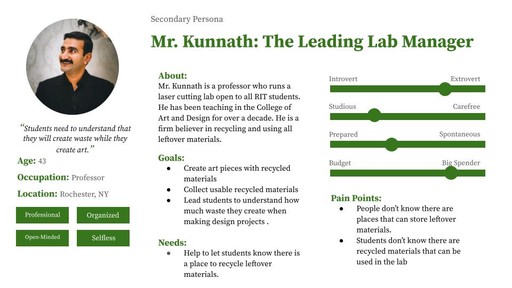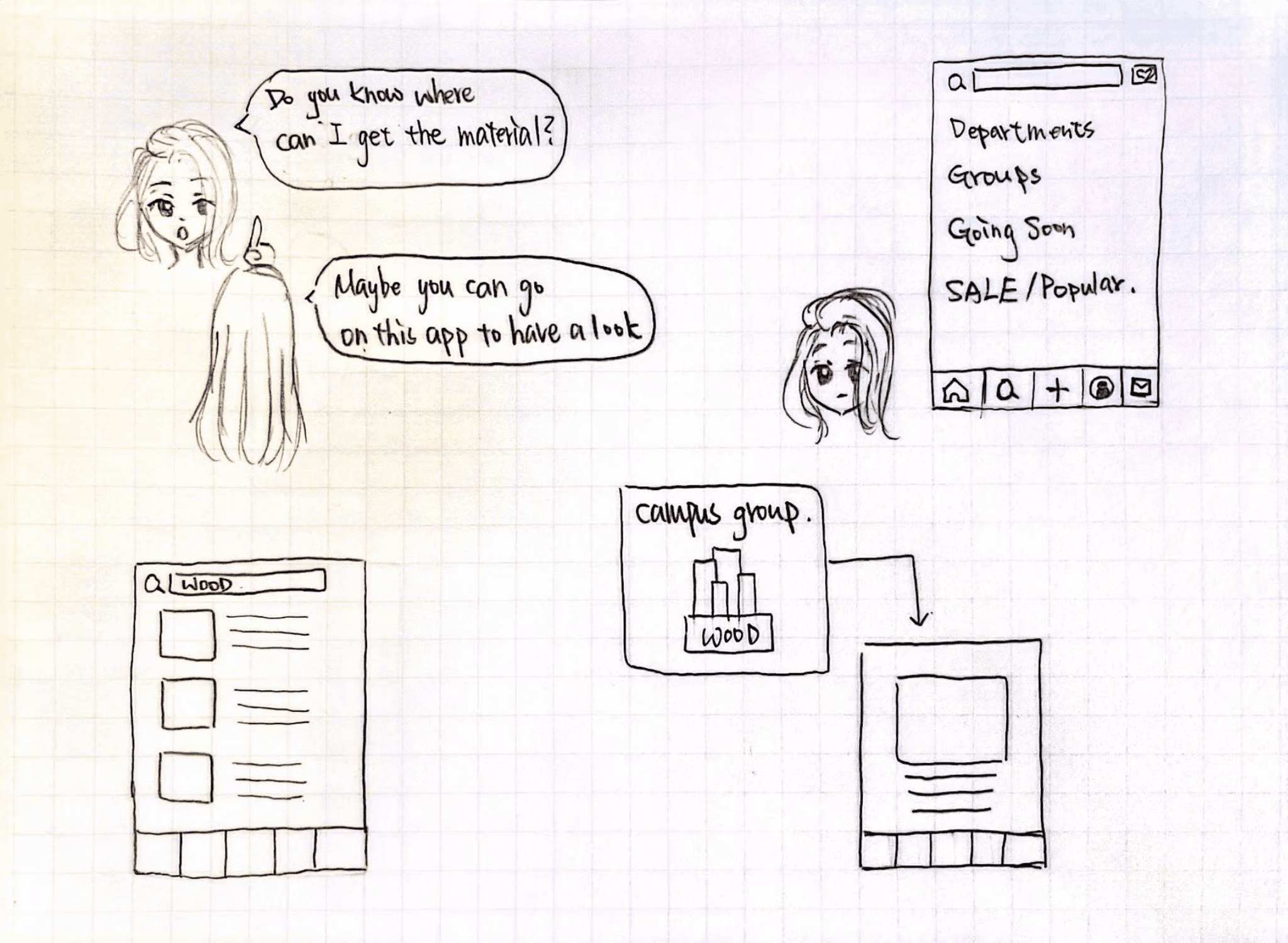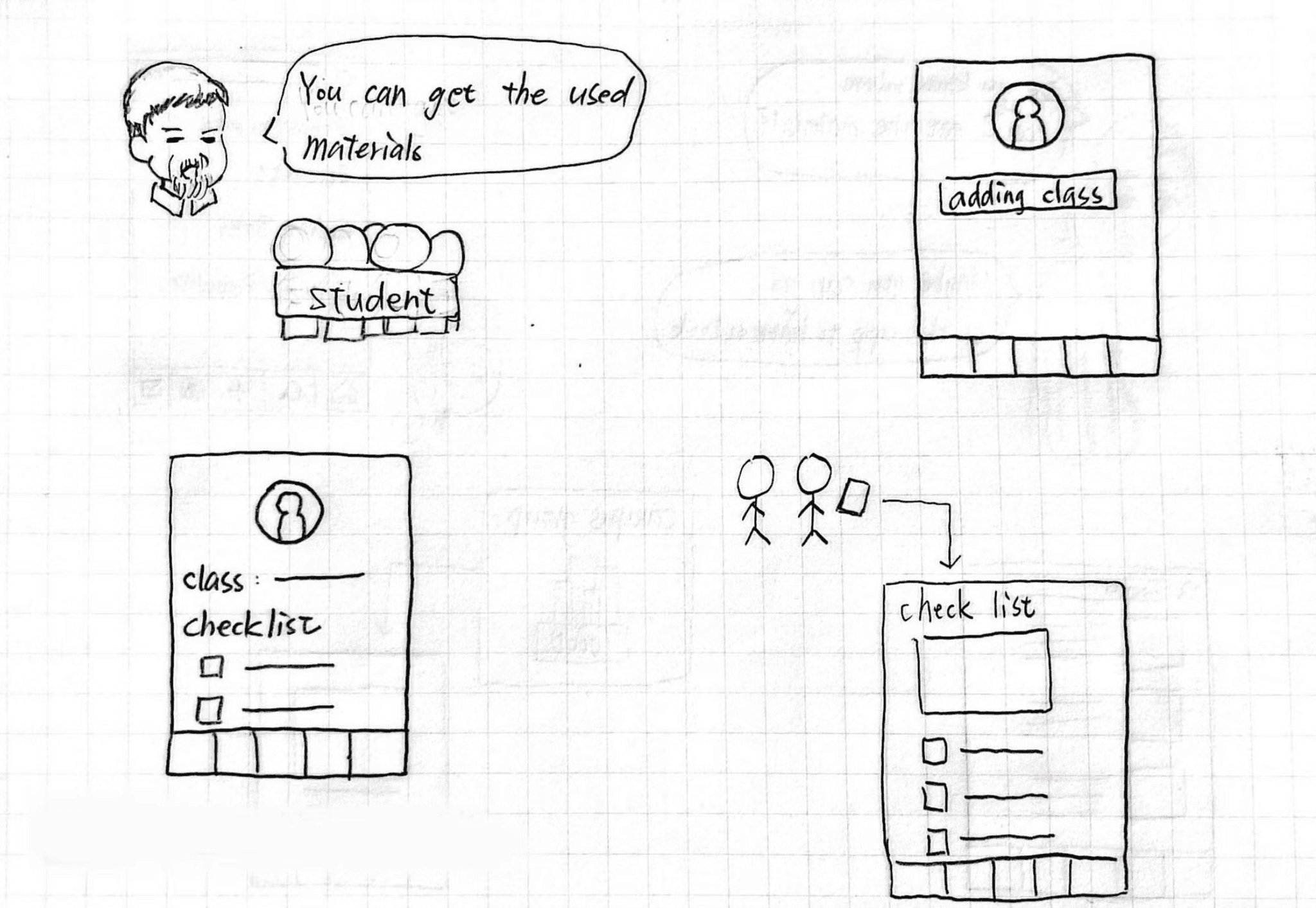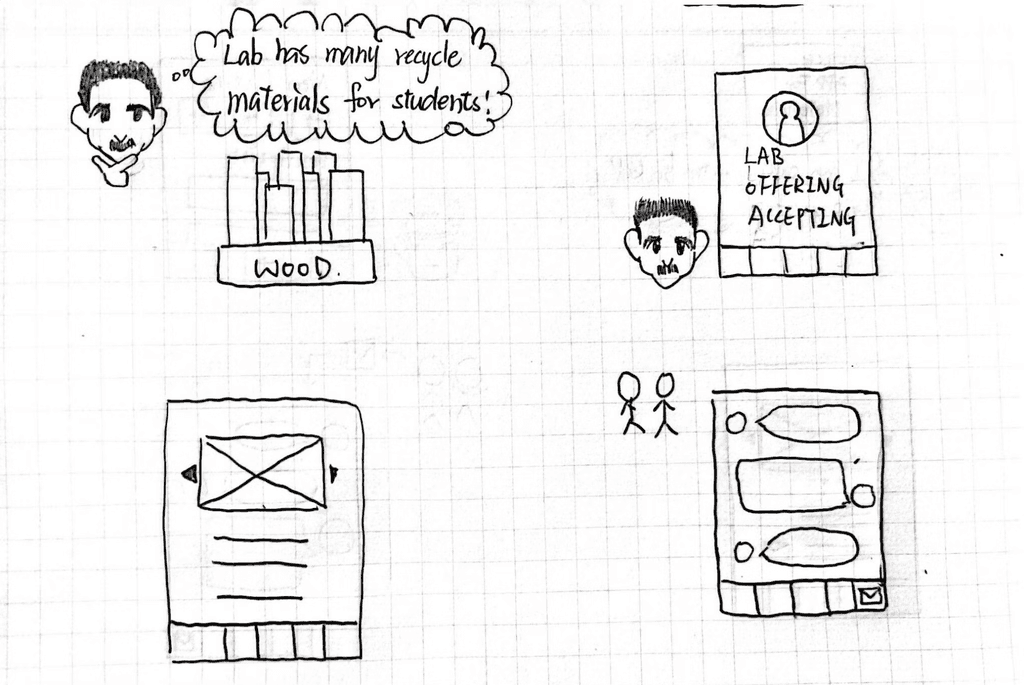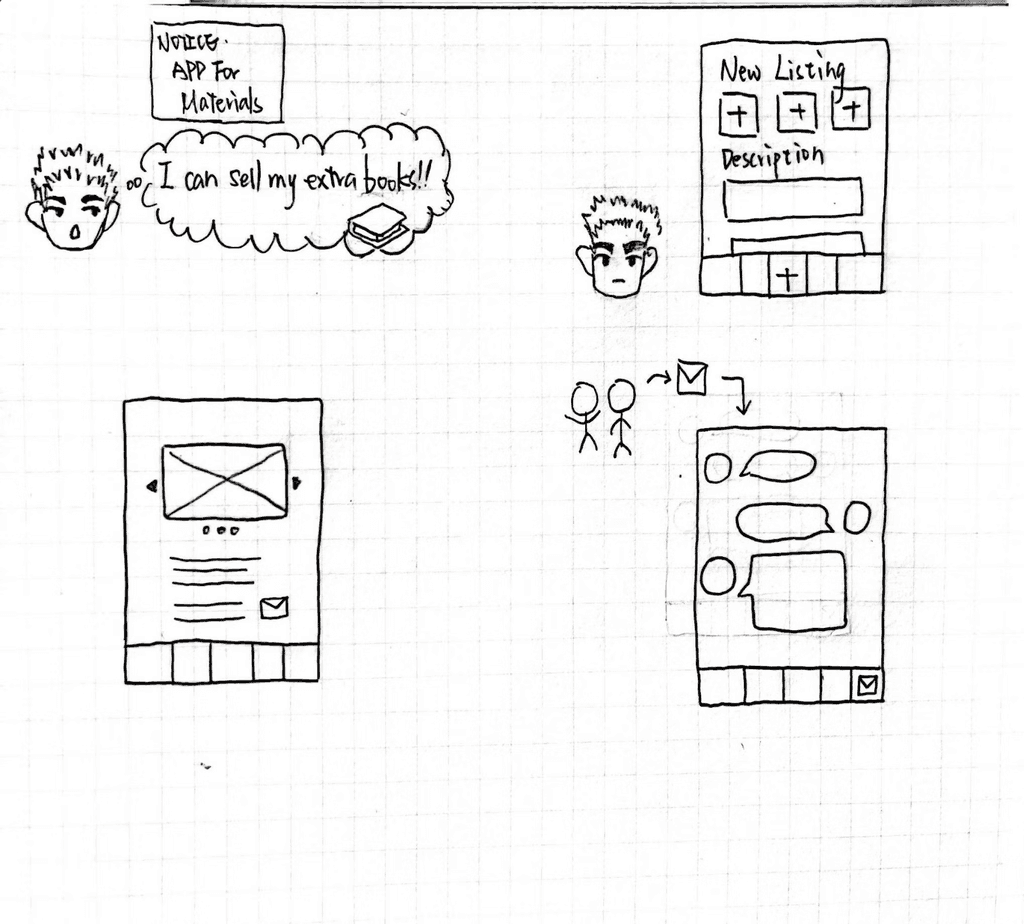Overview
ReGreen is a mobile application designed for students, professors, and campus labs that facilitates the resale of leftover supplies, helping students save money and reduce waste.
View Prototype
Timeline
Jan 2023 - May 2023
Responsibilities
User Research, Interaction Design, Visual Design, Prototyping.
Deliverables
Prototype
Project Type
Group Project
Research

Our target audience began with just RIT Students.
While the project could expand to other college campuses, each campus would have its own dedicated section.
Interviews
We began by discussing the interview method and questions for each stakeholder.
The following groups were chosen for the interview.
Professor
1

Campus
Lab
2

7
Students

Persona
For our Personas, we created four individuals who represent each of our stakeholders.
Our primary personas are both students, one would like to get rid of their old class materials, and one needs materials for their class.
Our secondary personas include a professor and a lab manager. The professor would like to find materials for all students in his class, and the lab manager is an active recycler who would like to encourage students to also recycle and reuse.
Analysis
Our research revealed four key pain points for exploration.
These findings lay the groundwork for addressing these pain points in our user-centric solutions.
We began the prototyping process with a workflow chart for the application.
The app would be navigated and used differently based on the three types of stakeholders:
students, professors, and campus groups.
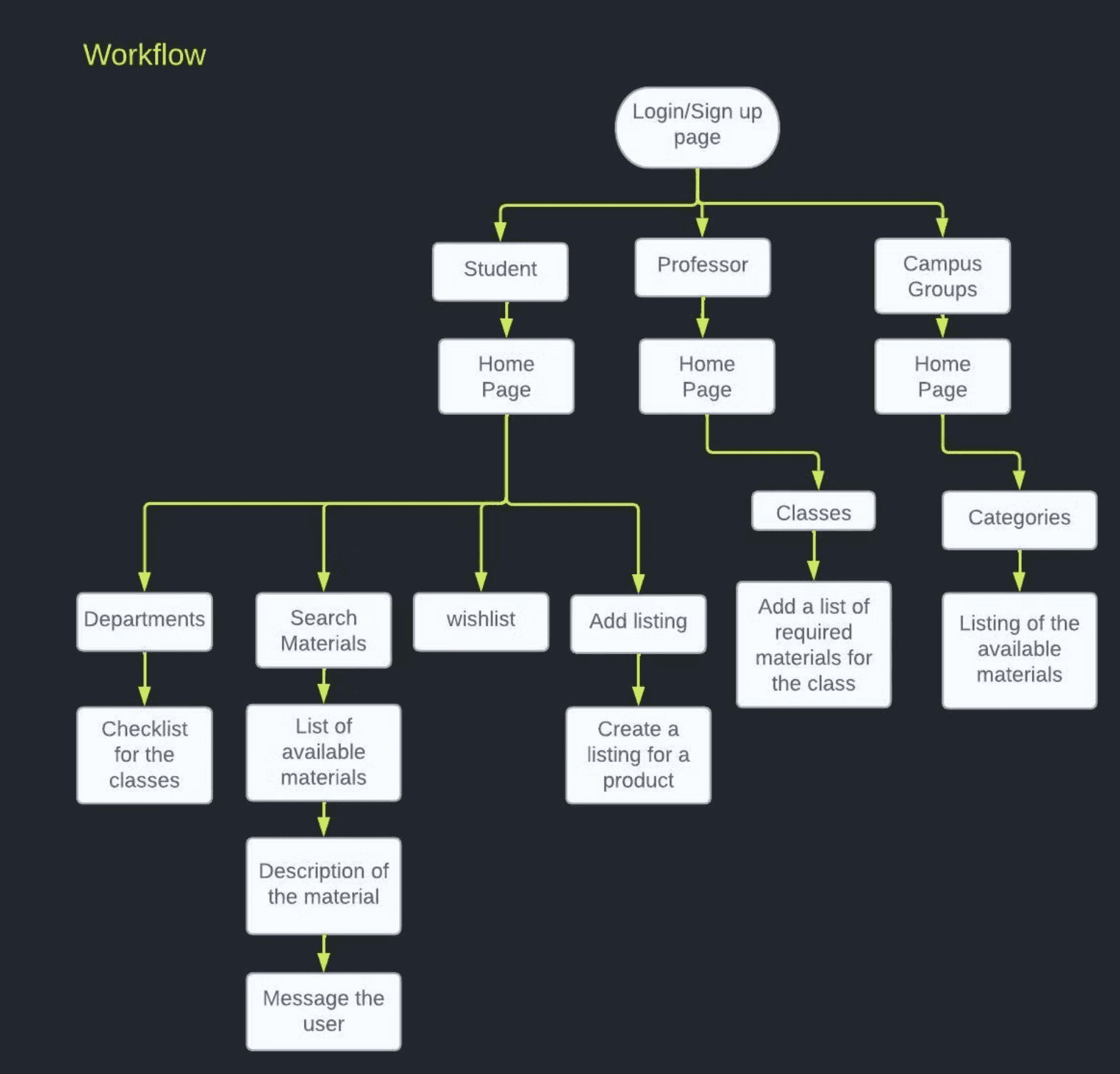
SCENARIO
Design
LOW-FIDELITY PROTOTYPE
We began the prototyping process with a workflow chart for the application. The app would be navigated and used differently based on the three types of stakeholders: students, professors and campus groups.
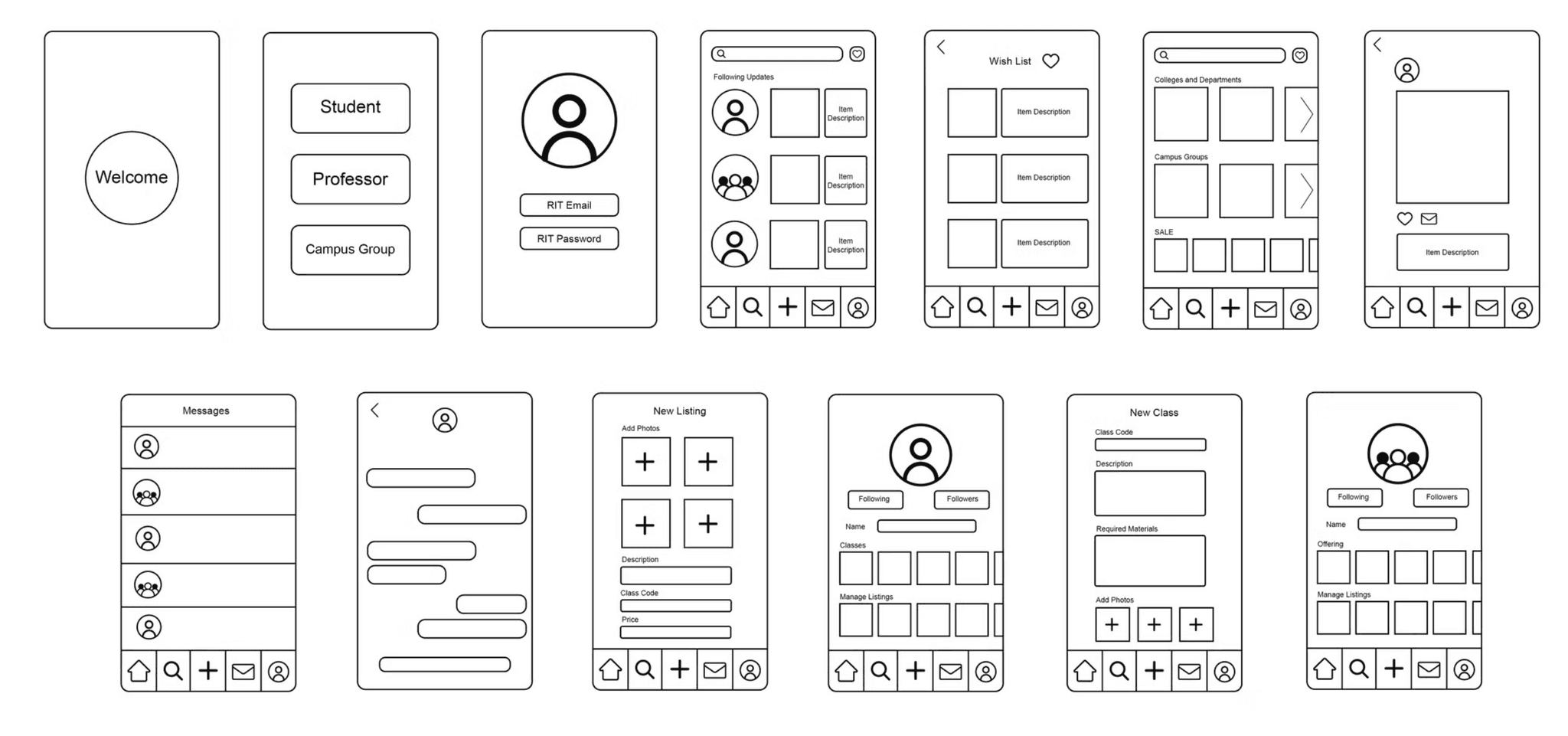
HIGH-FIDELITY PROTOTYPE
For our high-fidelity prototype, we used Figma to create all of the screens and animations. Below is a video that explains how the different user groups can interact with the prototype.
Figma Link
Reflection
Working with a diverse team taught me the importance of clear communication and the value of multiple perspectives. Collaborating with developers, sustainability advocates, and designers allowed us to create a balanced, practical solution that aligned design with sustainability goals.
Receiving feedback from users, professors, and team members showed me the power of iteration. Being open to changes and improvements helped me refine my design beyond my initial vision, ultimately creating a stronger final product.

